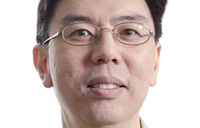
Peter Cheung, professor of biology in the Faculty of Science, has been awarded $583,315 from the Canadian Institutes of Health Research (CIHR) to study how cell gatekeepers, known as histones, work.
Cheung’s research focuses on the histone variant known as H2A.Z. “Histones are the protein partners of DNA in all eukaryote cells, and they control accessibility of the DNA within the genome. H2A.Z is a specific type of histone found at the promoter regions of genes that control when and whether a gene is expressed or not,” says Cheung.
H2A.Z is known to be critical for controlling gene expression, but a long-standing puzzle has been why H2A.Z functions to turn some genes on, but turn other genes off.
Cheung’s overarching research question asks how histones and histone-modifying enzymes control expression of the many genes within the human genome. The study of histones is fundamental part of a growing research field called epigenetics. Cheung notes that mis-regulation of many of these pathways and histone-modifying enzymes links directly to cancer development and other diseases. In fact, the global epigenetics drug market is projected to be worth US$8 billion, and research by Cheung’s group will play an important role in identifying the key molecular steps that could then be targeted by future drug discovery work.
His five-year CIHR operating grant, titled “Elucidating the functional roles of the different H2A.Z isoforms in mammalian cells,” focuses on versions of the H2A.Z histone in human cells that turn genes on and off. Recently, it was discovered that there are two versions of H2A.Z (different isoforms) that differ only by a few amino acids in human cells, and researchers in Cheung’s lab are investigating the hypothesis that one isoform may be responsible for turning genes on whereas the other is responsible for turning genes off.
“My lab uses biochemical purification of histones followed by mass spectrometry, and found that the closely related H2A.Z isoforms can bind different proteins,” explains Cheung. “This grant will support our work in testing the hypothesis that the two H2A.Z isoforms bind and recruit different proteins to different genes that in turn either turns a gene on or off. Moreover, we will be able to better determine the molecular mechanisms of how these H2A.Z isoforms connect with the gene expression pathways and control gene expression in general.”


